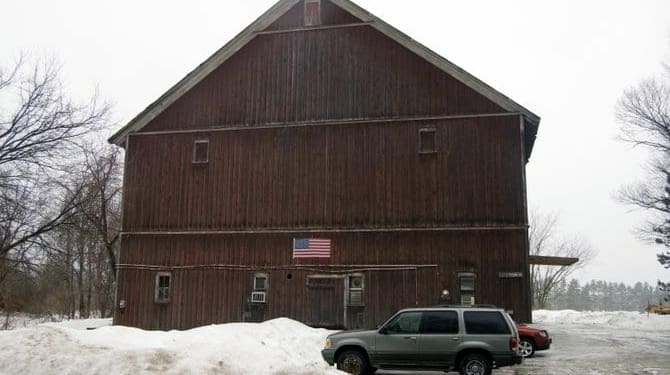Preserving the Hilton barn through relocation appeared to be an unreachable solution, but tying it to another regional development could be the historic building’s savior. At the New Scotland Town Board meeting Wednesday, March 11, Councilman Daniel Mackay said the Hilton barn could be moved not far from where it has sat since Frank Osterhout built it 1898. The 60-foot wide, 120-foot long and 60-foot tall barn is in talks to be aligned with the Helderberg Hudson Rail Trail, which has opened funding opportunities for its relocation. “We are looking to finalize where that structure will be relocated, because those are ongoing conversations with the landowner I don’t want to discuss at this point and time,” Mackay said. “Our intention is to have a direct affiliation with the Helderberg Hudson Rail Trail.” Under the proposed plan, Mackay said the barn would be relocated “within a half-mile radius” of its current site, and be adjacent to the trail. This would keep the building, commonly known as the LeVie barn, within the town. Local relocation was of prime importance for the town. “(The barn) has the potential to serve a variety of very interesting roles and functions, partially in relationship to the rail trail,” said Mackay. Albany County Legislator Michael Mackey, D-New Scotland, has been working with Mackay on ideas to relocate the barn. Mackey acknowledged relocating the barn is “expensive” and the town would not be able to fund the move itself. Prior estimates pitted the cost around $500,000. “In conjunction with the rail trail, that does tap a whole different pile of money,” said Mackey. “If we can do this, and it looks like we are going to be able to, it is going to be a great addition to be able to preserve it and repurpose it.” With a potential solution in sight, town officials will have more time to physically relocate the structure. The town’s Planning Board held a special meeting earlier this month and approved the re-permitting of Country Club Partners’ 18-lot residential subdivision on its 22.4-acre property located off Maple Road. The Planning Board granted the permit renewal, but its approval was tied to an extension for the barn to be removed from the property. The barn must be removed by Aug. 31 under the new agreement, which is a four-month extension. Town officials were required to notify the property owner of an offer it received to relocate the barn by the end of February, which Mackay said was done. “The reason why that four-month extension is so valuable is that I do believe we have political support at the county level, from both the County Executive’s Office and the County Legislature,” Mackay said, “and therefore now access to funding such that we will be able to relocate the Hilton barn structure within that timeframe.” Mackay said the extension would not hamper development of the site, because construction work has not begun and permits for a new facility to store the maintenance equipment housed in the barn have not been sought. “There was this sort of fundamental conflict about when they said we had to have it offsite and then in effect making the barn available to us to take off site,” he said. “It wasn’t going to be vacant in time to meet that schedule.” The new agreement also requires the property owner to be out of the barn by June 1 even if it requires the equipment to be placed in temporary storage. Exactly how the barn will be relocated is still being determined. It could be deconstructed through manual labor and cranes, or moved intact using a special transportation vehicle to pick up the structure. Both methods are comparable in cost, according to Mackay. “We are looking at both just in case, and to make sure what is the cheaper way to do it; what is the best way to do it,” he said. “It does appear a barn structure that size and this type of construction can be moved intact that way.” The slate roof, which does have some damage, would be removed either way. It’s estimated there is around 40 tons of slate on the structure. “It would be expensive to replace and it also puts a great deal of weight at the top of the structure,” Mackay said. “Removing that weight offers probably a longer term viability for the rest of the structure. The likely outcome would be a metal seam roof, which would not technically be historic but it would be practical.”
Historic barn may align with Rail Trail
Leave Comment



